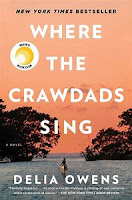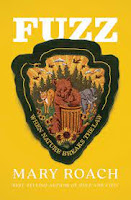Life on the Mississippi by Rinker Buck is an excellent travelogue of sorts, in the same vein of his book The Oregon Trail. In this latest effort, Buck chronicles a 2,000 trip down the Ohio and then into the Mississippi River in a wooden flatboat, the Patience. It's a great read about the people and history of the region joined with the experience Buck had traveling down the rivers.
Flatboats were a common thing in the early 1800s and Buck takes one from the town of Elizabeth, just above Pittsburgh, to New Orleans. He starts out a neophyte and learns how to boat on the river along with the huge commercial vessels, particularly the long barge strings above New Orleans. The book is a great story about an idea that's seen through, and Buck makes the comment that a river journey is an exploration of character. He at times travelled solo and at times with others and he and his crew solve problems along they way. They navigate the rivers, deal with pop-up storms that emerge without warning, force a beaching and then get back in the water, and find fuel when there's many stretches with none by the water.
Buck also writes about the communities, places like New Madrid, Missouri and Natchez, Mississippi. There were such interesting characters he met along the way, "river rats" who grew up on the Ohio or Mississippi. The rivers, especially the Mississippi, are commercial traffic heavy and to avoid a collision, he deliberated beached the Patience and relied on the wash from a tugboat wake to get him off the sandbar.
There's a lot about how the history Buck sees isn't always in the line with the idealized history we like to think of. He chronicles the slave trade and Indian Removal Act of 1830 and the devastating impact it had on lives. Buck also writes about his mother, who passed away not much before he started the trip, and how he would drop her off at the supermarket once weekly for her to do her shopping for an hour. It's a personal and interesting story that's told really well.
.jpg)







.jpg)

.jpg)




.jpg)

.jpg)
.jpg)
.jpg)
.jpg)
.jpg)





